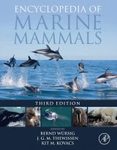About this book
Fish Physiology: Organic Chemical Toxicology of Fishes discusses the different types of organic chemical contaminants and their respective toxic effects in fish. This volume also covers the detection of dissolved organic compounds and methods to assess organic toxicity.
Substances addressed in Fish Physiology: Organic Chemical Toxicology of Fishes include organometallics, hydrocarbons, endocrine disrupting compounds (EDCs), insecticides, herbicides, and pharmaceuticals. Fish are exposed to an ever-increasing array of organic chemicals that find their way into rivers and oceans. Some of these compounds are no longer being produced but nonetheless persist within the environment (persistent organic pollutants, or POPs).
The exposure of fish to toxic organic compounds has potential impact on human, fish, and ecosystem health. Yet the regulations that govern environmental water quality vary worldwide, and compliance is never complete.
Fish Physiology: Organic Chemical Toxicology of Fishes provides a crucial resource on these issues for researchers in zoology, fish physiology, and related fields; applied researchers in environmental monitoring, conservation biology, and toxicology; and university-level students and instructors in these areas.
Fish Physiology: Organic Chemical Toxicology of Fishes is organized by type of toxic organic chemicals. It includes metals, POPs, EDCs, herbicides, insecticides, and pharmaceuticals. It measures toxicity in a variety of ways aside from lethality. It probes the toxic effects of compound mixtures as well as single pollutants.
Contents
1. Introduction: Organic contaminants in the environment and fish
2. Persistent Organic Pollutants (POPs)
3. Organometallics
4. Hydrocarbons
5. Endocrine disrupting compounds (EDCs)
6. Insecticides
7. Herbicides
8. Pharmaceuticals
9. Emerging threats
10. Dealing with mixtures
Customer Reviews
Biography
Professor Keith B. Tierney is Assistant Professor in Biological Sciences at the Environmental Toxicology Department of the University of Alberta, Edmonton, Canada. His current research interests are in environmental toxicology and physiology of fishes.
Tony Farrell is a graduate of Bath University, where he was fortunate to study with Peter Lutz. His fortunes grew further when he moved in 1974 to Canada and the Zoology Department at the University of British Columbia to complete his Ph.D. degree under the superb tutelage of Dave Randall. In 2004, Tony returned to UBC when he accepted an endowed research chair in Sustainable Aquaculture. In between these positions at UBC, Tony was employed at the University of Southern California (PDF), the University of New Brunswick (sessional lecturer), Mount Allison University (first real job) and Simon Fraser University (moving through the ranks to a full professor). In addition to highly controlled laboratory experiments on fish cardiorespiratory physiology, Tony is committed to working on animals in their own environment. Therefore, his research on fish physiology has taken him on an Alpha Helix expedition to the Amazon, the University of Gothenburg and the Kristineberg Marine Research Station in Sweden, the Portobello Marine Biological Station in New Zealand, the University of Christchurch and Massey University in New Zealand, the Bamfield Marine Science Station and the Huntsman Marine Station in Canada, the University of Aarhus in Denmark, the University of Adelaide Charles and Darwin University in Australia, and to the Danish Arctic Marine Station on Disco Island in Greenland. These travels have allowed him to work and with many superb collaborators word-wide, as well as study the physiology of over 70 different species of fish. Tony has received a number of awards for his scientific contributions: an honorary degree from the University of Gothenburg in Sweden; Awards of Excellence from the American Fisheries Society for Fish Physiology, Conservation and Management; the Fry Medal from the Canadian Society of Zoologists; and the Beverton Medal from the Fisheries Society of the British Isles.






































